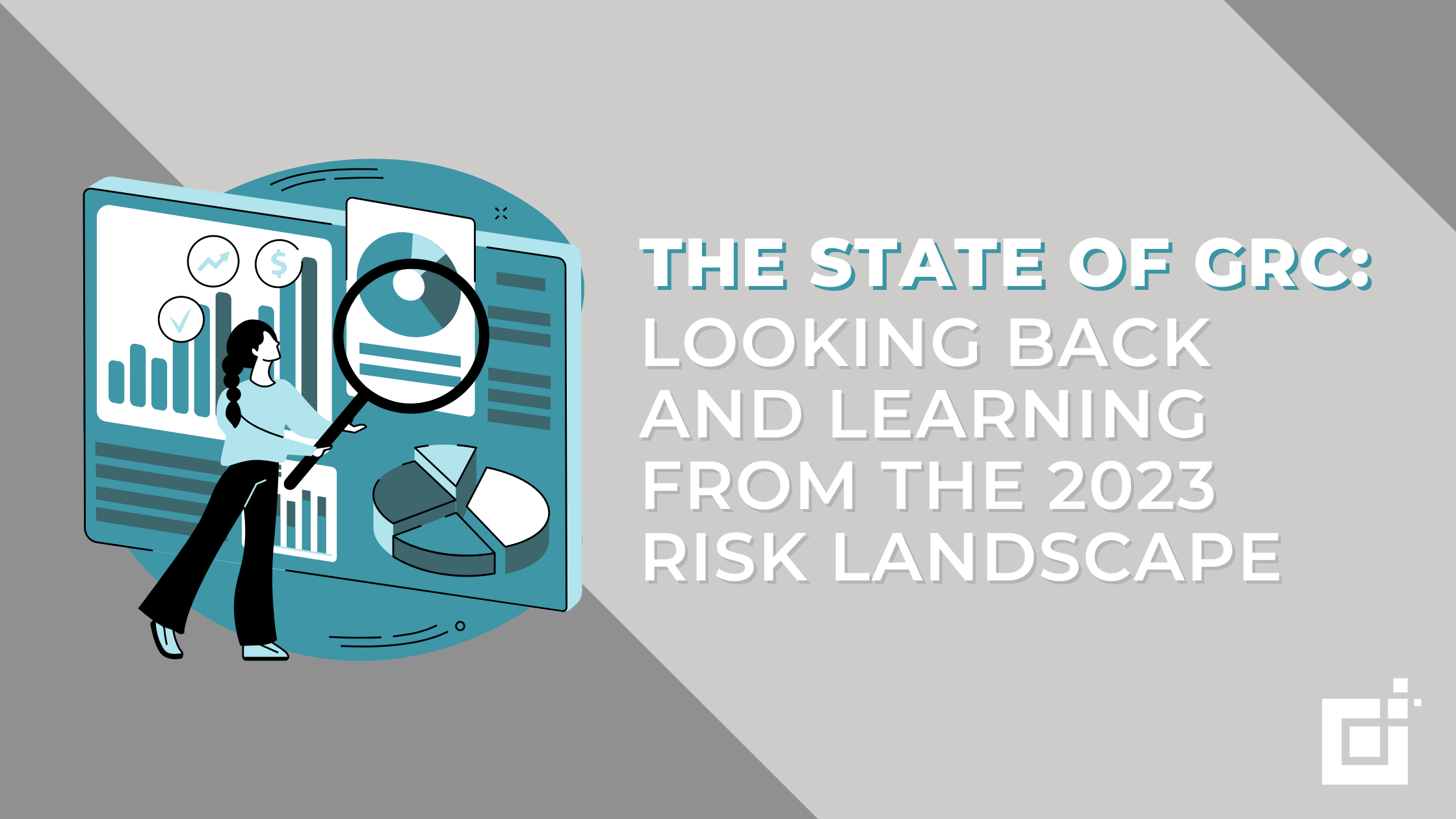
As risk and compliance professionals, we like to take time towards the beginning of every year to take stock of the previous year and use it to glean insights for the future.
2023 was a year of shifting landscapes and rapid changes in technology and business, especially as we are still reeling and recovering from the global pandemic. As organizations and industries navigated these changes and shifts, new risks emerged, demanding agility for swift change and strategic foresight from risk management teams.
Let’s take a closer look at how 2023 shaped the risk and compliance industry and how we can use it as a foundation to handle what’s to come in the rest of 2024.
2023 and Economic Recovery
2023 saw some relief from the pressure the COVID-19 pandemic put on our economy. Supply chain disruptions and price inflations—both of which were quite significant in the past few years—began to stabilize, offering a sigh of relief to both organizations and consumers.
The employment landscape saw a shift, too. Organizations spent 2020-2022 on frantic hiring sprees and struggling to find the right talent. In 2023, however, hiring managers found the fear of talent shortages beginning to subside for a number of competency areas, allowing businesses to take a more holistic approach to their hiring strategies.
The conversation around returning to traditional workplace settings and structures has been a theme in business settings over the last year, especially among some high-profile organizations. But the conclusion that many organizations have come to—and what we as risk managers need to keep in mind—is that we’re never going back to 2019. Amidst the positive developments, a new work culture emerged, and with it came new challenges.
That’s not to say this shift didn’t come with new tools and solutions. The transition from 2022 to 2023 did bring about a notable shift in business priorities. But while supply chain resilience and talent acquisition dominated risk discussions in the previous year, the spotlight shifted to the rise of artificial intelligence (AI) as a predominant risk factor.
Understanding the Risks and Opportunities of Artificial Intelligence
Organizations grappled with the complexities of adopting AI into their processes and practices, as well as identifying and managing AI-related risks. AI’s nuanced nature—encompassing risks, utilization, and missed opportunities—posed significant strategic challenges for businesses. The challenge boils down to the two sides of the same coin–what are the risks of utilizing AI and the risks of not utilizing AI?

As various industries began to adopt and implement AI, organizations made it a top priority to explore the risks and opportunities associated with it. Concerns around privacy, cybersecurity, and industry disruption cropped up, which prompted ongoing conversations surrounding the approach to AI in risk management and beyond.
Despite these challenges, organizations should recognize AI’s potential to foster innovation and gain a competitive edge in an increasingly digital landscape. The rapid pace of technological change in 2023 introduced new and evolving threats and opportunities, underscoring the need for dynamic risk management practices.
Staying abreast of emerging technologies and their potential impact on risk profiles became paramount in this ever-changing landscape. In an era defined by disruption, the ability to swiftly assess and address new risks positioned organizations for success.
The Role of Artificial Intelligence in Cybersecurity
As discussions around the use of AI gained traction, its role in cybersecurity emerged as a focal point for many companies. But while the rise of AI showed promise in enhancing cybersecurity defenses and threat detection capabilities, we had to come to terms with the fact that others may not use it for its intended—or wholesome—purpose.
Cybercriminals capitalized on AI’s capabilities, posing sophisticated threats that traditional cybersecurity measures struggled to mitigate. However, the organizations that recognized AI’s potential in bolstering cybersecurity defenses paved the way for innovation in combating cyber threats.
Conclusion
As we reflect on 2023, it’s evident that the landscape of risk assessment and compliance is undergoing rapid transformation. From the easing pressures of supply chain disruptions to the rise of artificial intelligence as a dominant risk factor, organizations faced a myriad of challenges and opportunities.
Looking ahead, GRC professionals should be adaptable in the face of evolving technology but conscious of the risks they may pose. Embracing dynamic risk management practices and leveraging emerging technologies will help you navigate the complexities of our business landscape and create sustainable success in an increasingly uncertain world.
For a more in-depth take on how 2023 was a banner year for AI and risk management capabilities, as well as where that will take us in 2024, check out Cential’s YouTube content, where our team delves into the nuances of our industry’s changing landscape, and stay tuned on LinkedIn for more content diving into the 2024 risk landscape.
